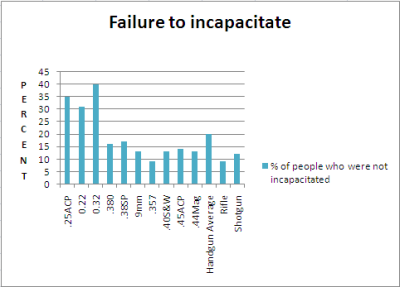Andrew Wiggin
New member
An article that I wrote was published in a minor blog.
The rest is here if you're interested.
There has been some discussion on “stopping power” of late so I think it’s time that we get a few things straight. First off, “stopping3598065314_7ccc33d168_b power” or “knockdown power” doesn’t exist. Velocity exists. Foot pounds exist. Momentum exists. Even tissue disruption can be quantified but there is no magical force called “stopping.”
The term “stopping power” is, at best, an awkward attempt to quantify the ability of a given cartridge or load to incapacitate an attacker. It may surprise you to know that Cracky McCrackerson, your friendly neighborhood crack head/rapist/burglar actually has no idea that your grandpappy’s 1911 is supposed to take a man’s arm off when it whizzes past. He doesn’t know that the stopping powertoothless suspender guy who seems nailed to that creaky stool at the gun store told you so. He doesn’t know that every gun rag ever written proclaims how singularly badass the .45 ACP is and how you have to buy a $3,000 1911 because ‘Merkah! You have to convince his body to stop trying to harm you. This is called “incapacitation.” What causes incapacitation, though?
The rest is here if you're interested.


